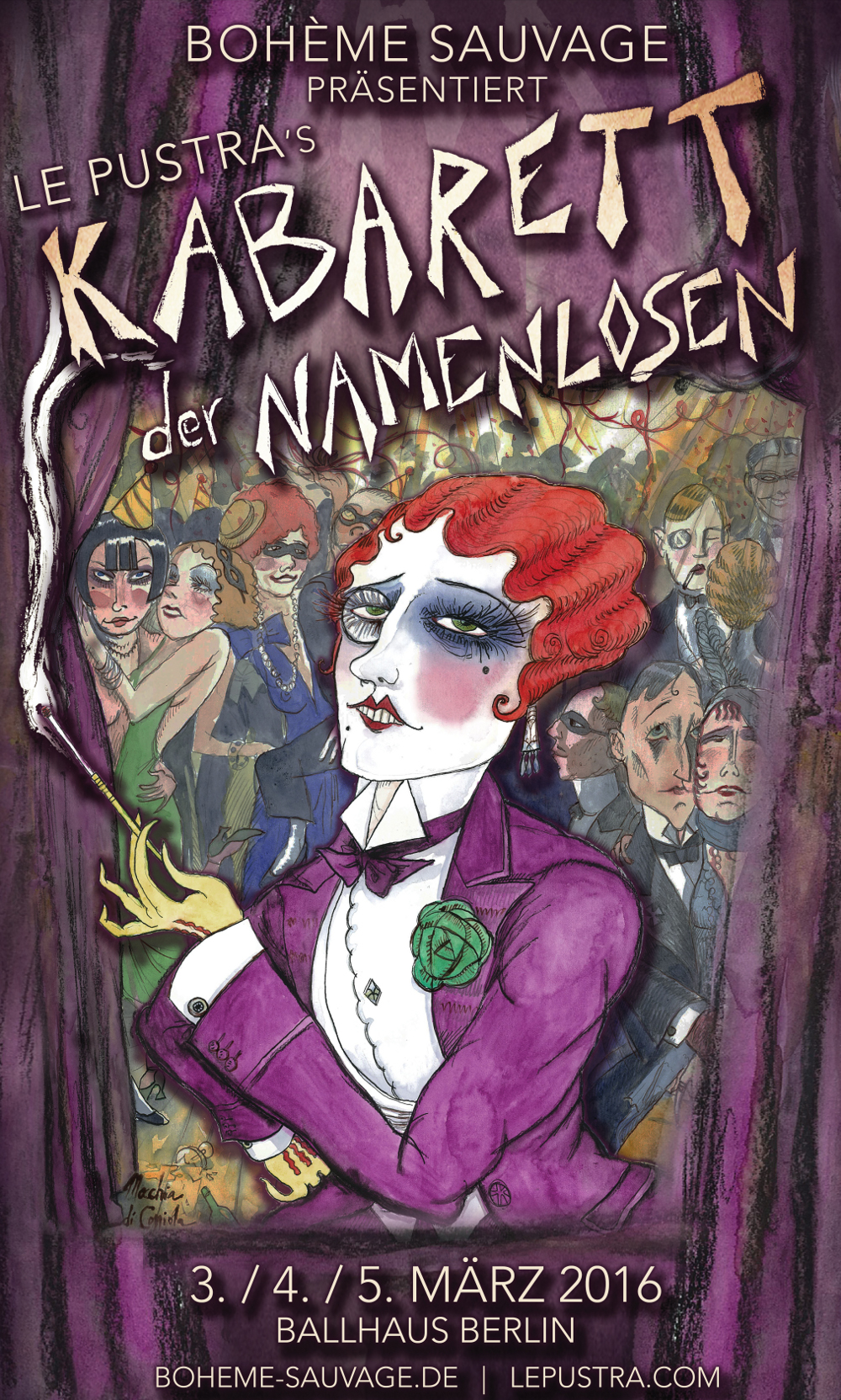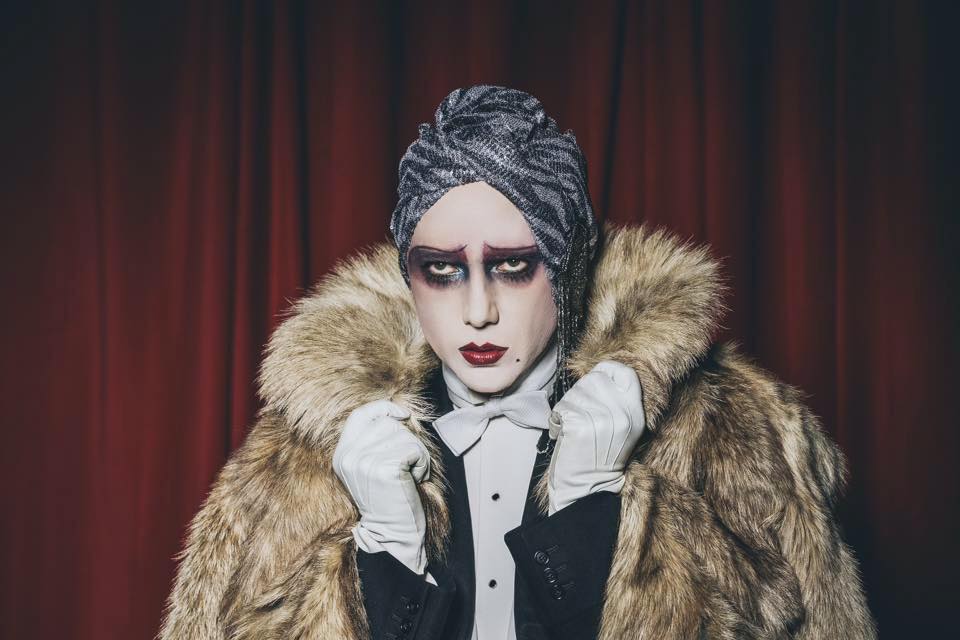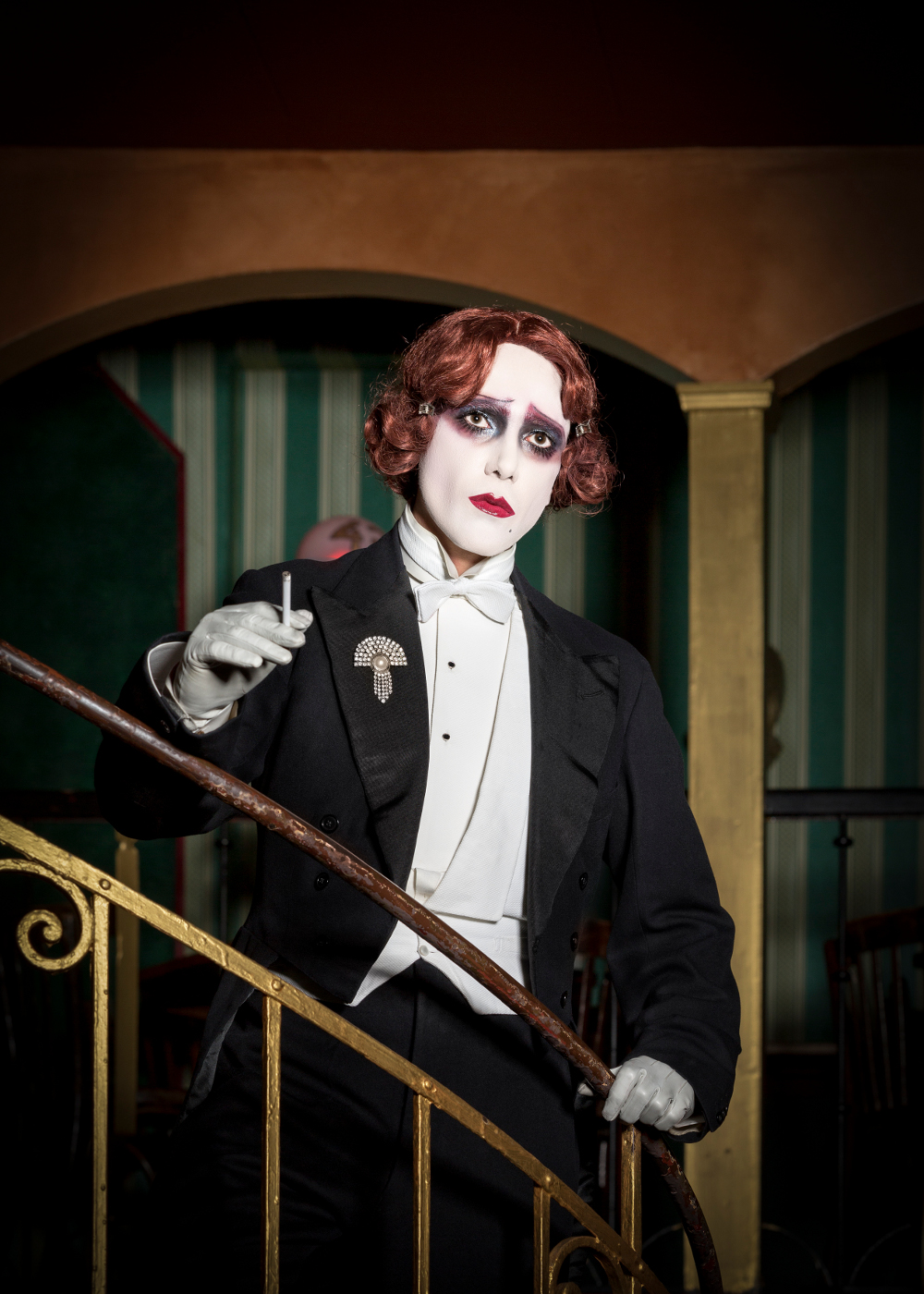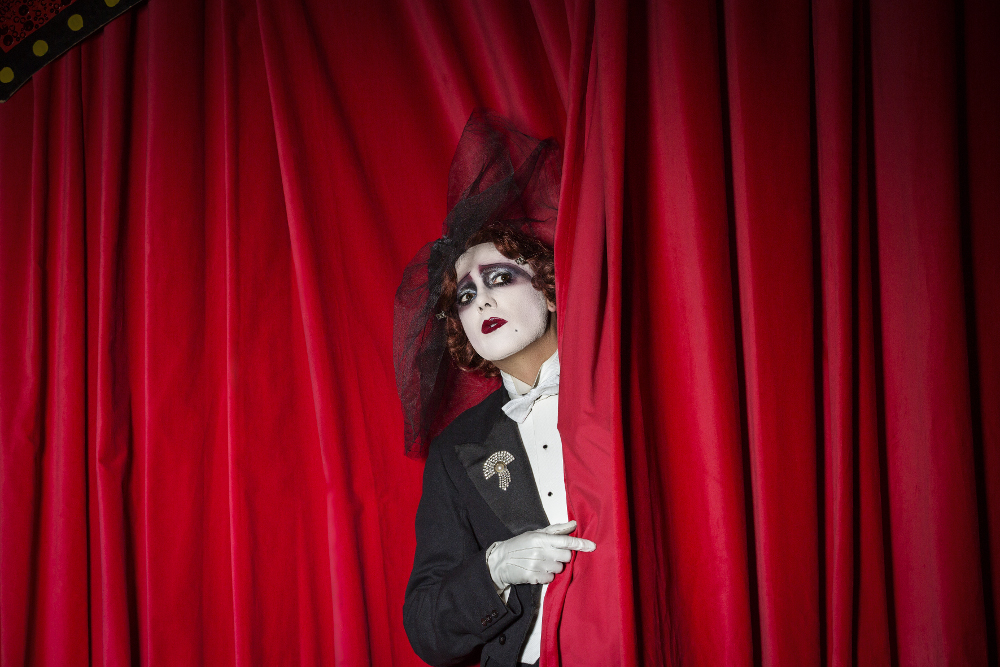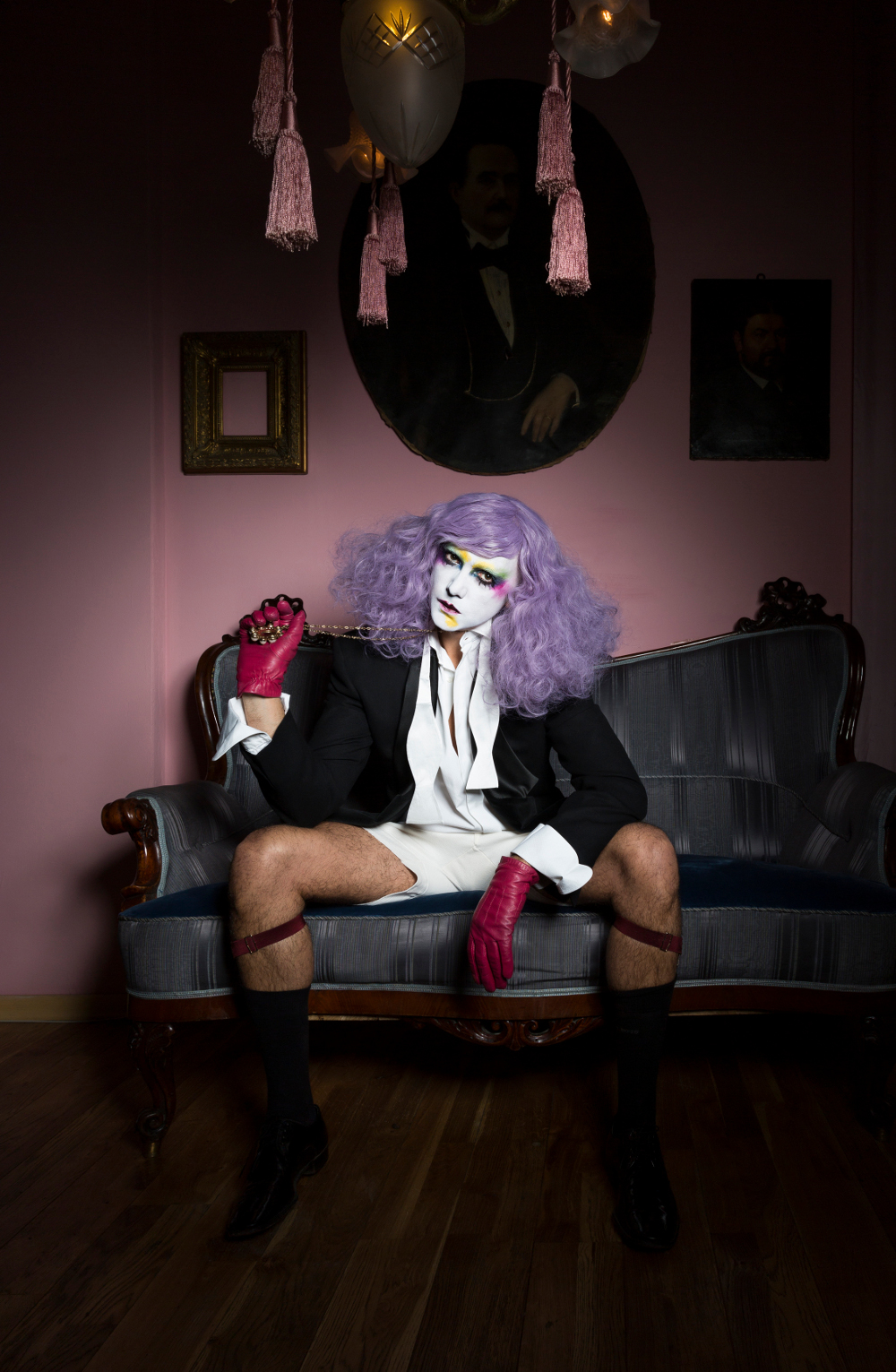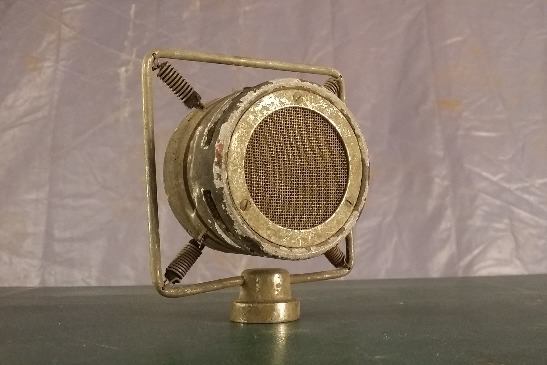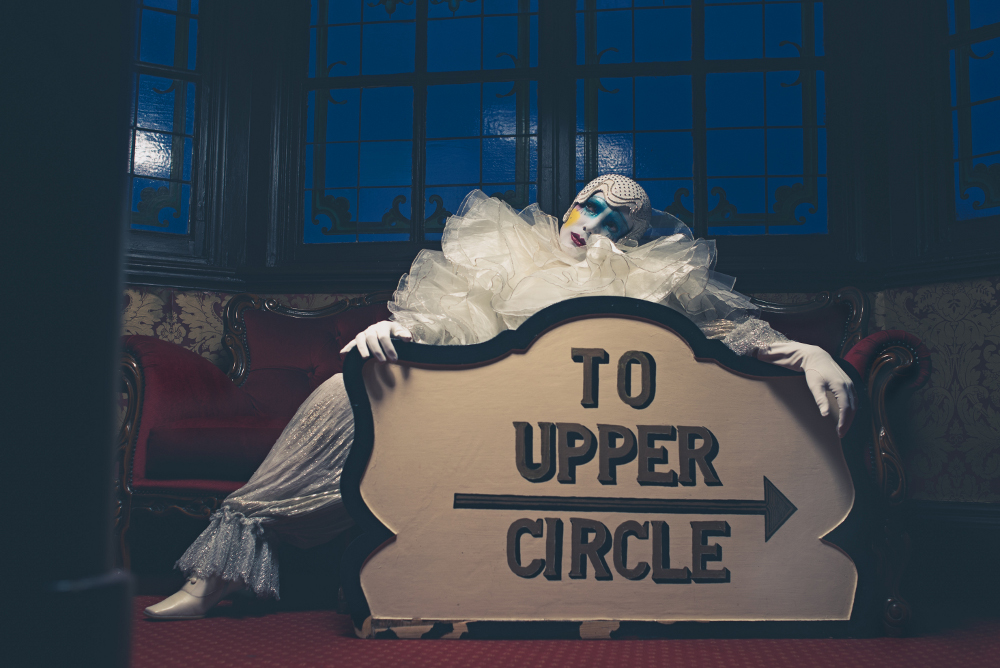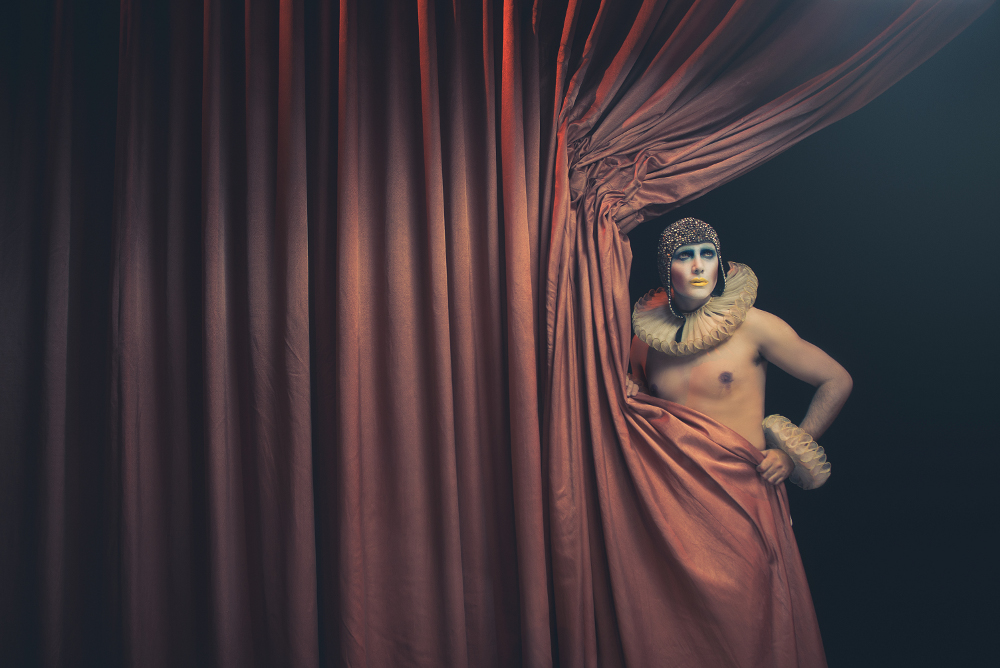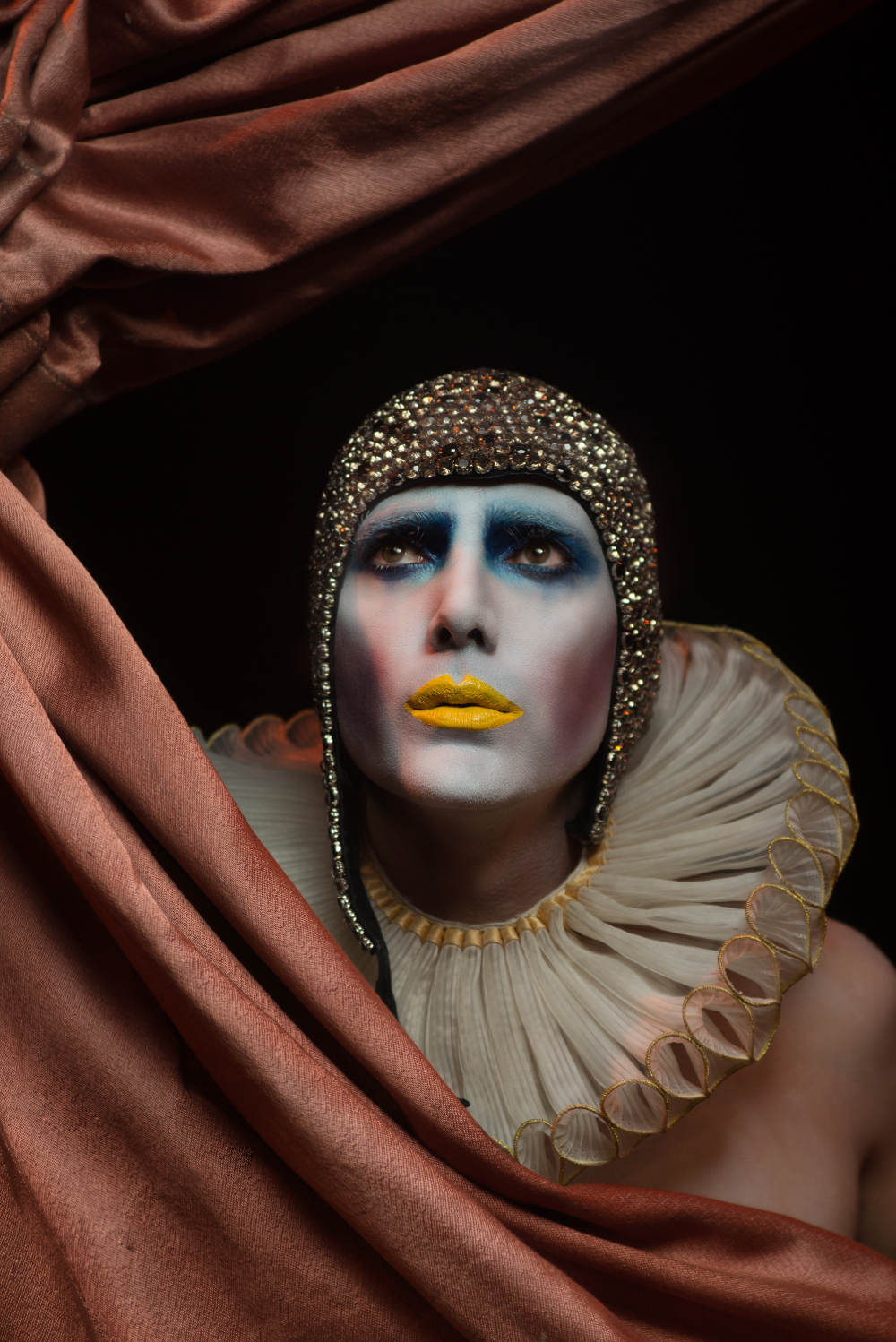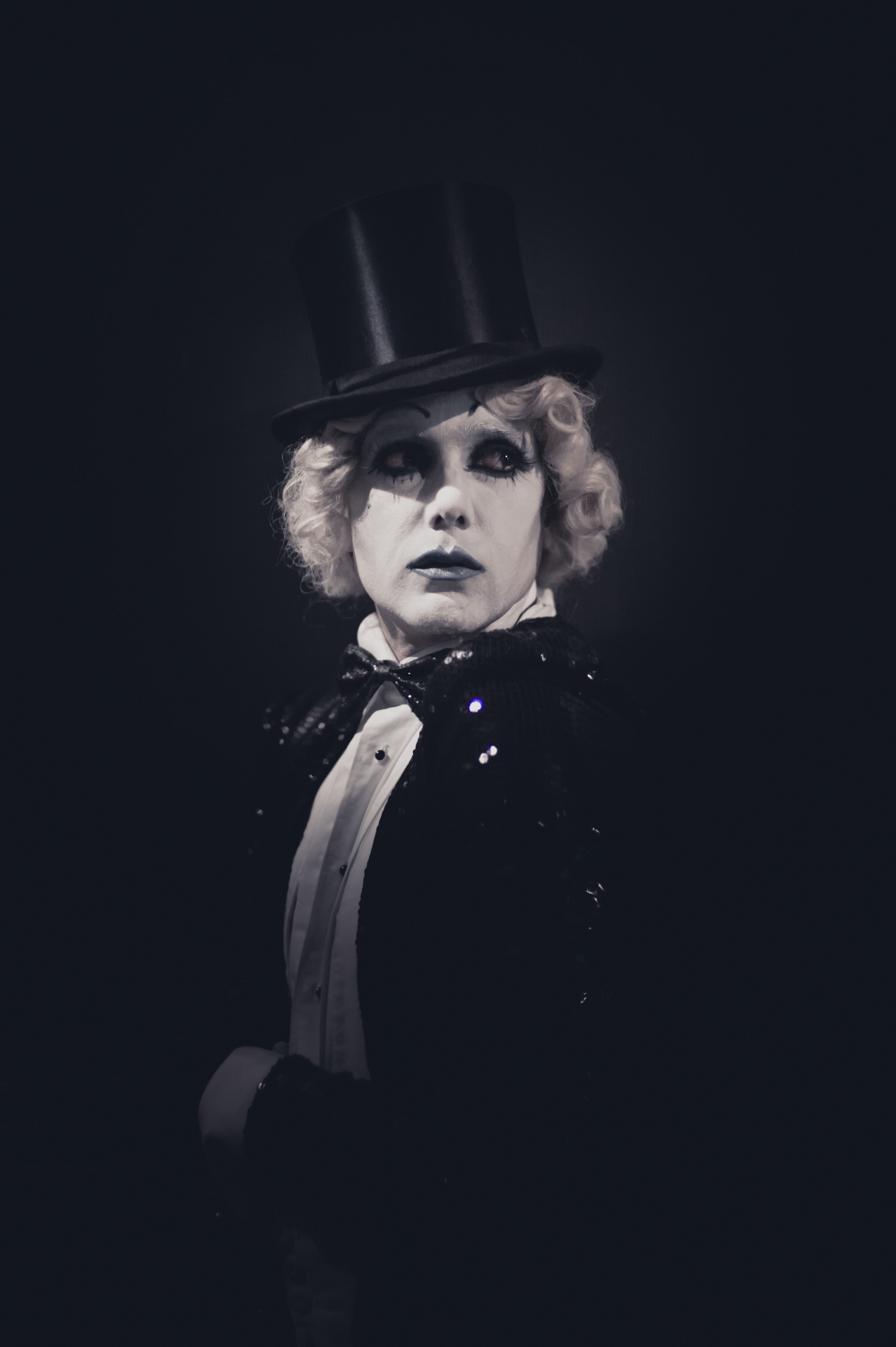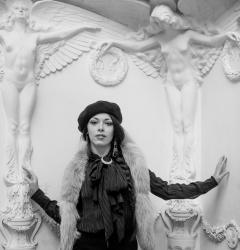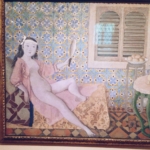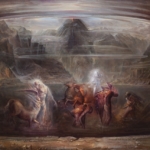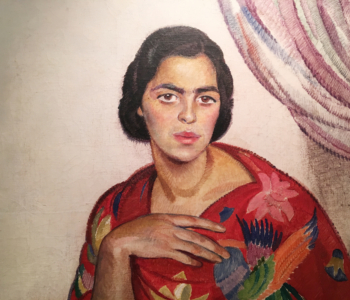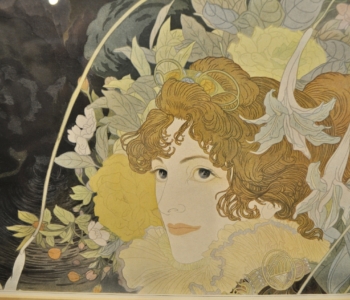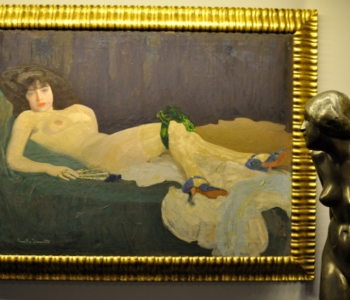Kabarett der Namenlosen’s artwork by Massimiliano Mocchia di Coggiola
Ho sempre ritenuto il travestimento come la più alta forma di fantasia. Ho conosciuto Le Pustra non molto tempo fa, quando cercavo delle immagini di Pierrot. Trovai alcune sue foto e rimasi colpita. Pensai che rappresentasse tutto ciò che il travestitismo dovrebbe essere: nessuna identità sessuale, nessuna età, nessun riferimento alla realtà. Solo fantasia, e di fondo sempre un tono di tristezza.
E’ difficile definirlo in un solo modo, lui si riassume in “singer, model, bon vivant, muse”. Il suo travestimento è eccessivo ma sempre umano, crea immagini più che personaggi, spesso ispirate agli anni ’20 come al gotico, al glam rock come ai film muti. La sua maschera preferito è Pierrot, il clown triste.
Quando mi ha detto che stava creando uno spettacolo chiamato “Kabarett der Namenlosen” (Il Cabaret dei senza nome), che in realtà riportava in vita un cabaret realmente esistito nella Berlino degli anni ’20 e ’30, mi ha subito interessato. Non solo per l’esplicita operazione di revival dell’epoca della repubblica di Weimar, ma anche perché in effetti non avevo mai sentito altrove di un’idea simile. Spesso gli spettacoli in costume sono ispirati ad una generica idea del retrò, mentre Mr Pustra ha fatto un’operazione molto precisa, da studioso.
Il Kabaret der Namenlosen era all’epoca uno dei peggiori cabaret di Berlino. Era gestito da un presentatore, Erich ‘Elow’ Lowinsky, il quale introduceva sul palco le performance dei vari “artisti”, che altro non erano che gente del pubblico senza arte né parte. Elow, con la promessa di dargli fama, in realtà li metteva alla berlina e si prendeva gioco di loro creando dunque sì uno spettacolo, ma comico-grottesco.
L’idea di Le Pustra è stata quella di riprendere il format originale, dandogli una lettura più contemporanea, prendendo ispirazione dall’arte dell’epoca, così come ai film di David Lynch, i Tableaux Vivants à la Ziegfeld, le illustrazioni di René Gruau e i Cabaret parigini della Belle Époque dal 1871 fino 1914. Il programma includerà performances di altri artisti con musiche di Frederick Hollander, Mischa Spoliansky, Philip Glass e poesie di Kurt Tucholsky. Il tutto nella storica sede del Ballhaus Berlin in Mitte (1905). Le Pustra sarà il presentatore e il maestro di cerimonia.
Come hai saputo del Kabarett der Namenlosen? Perché hai voluto ricrearlo?
Quando visitai per la prima volta Berlino, nel 2012, segui un tour a Nollendorfplatz che si chiamava “Il quartiere di Christopher Isherwood” e la guida, Brendan Nash (cabaret-berlin.com), nominò il Kabarett der Namenlosen e il suo inventore Erich ‘Elow’ Lowinsky. Fui immediatamente incuriosito, il titolo stesso mi attirava, sembrava misterioso e oscuro. Era piuttosto avvilente camminare per le strade di Berlino in cui tutto era nuovo, freddo, senza anima, tutti quei Cabaret erano scomparsi. Potevo davvero sentire un senso di perdita.
Allora provai a ricreare un Kabarett der Namenlosen per la prima volta a Londra, al The Boys Club (uno dei miei locali preferiti). La prima incarnazione del Kabarett era un esperimento, non ero ancora sicuro di cosa volevo creare, ma capii che il mio scopo era quello di ricreare uno spettacolo di autentica e insieme moderna interpretazione del periodo di Weimar e vivere la mia fantasia, come io la vedo nella mia mente. Tutti abbiamo delle visioni di come le cose sono nella nostra mente, ma spesso sono diverse dalla realtà, però ricreiamo immagini surreali e questa era la mia idea e il mio desierio per lo spettacolo: Berlino aveva bisogno di uno show come il mio e volevo celebrare quella parte del passato di Berlino. Mi ci sono trasferito lo scorso Aprile, all’inizio mi sentivo un po’ perso, non ero molto sicuro di come continuare la mia carriera di artista, ho cambiato diversi lavori ma mi volevo soprattutto concentrare su spettacoli grandi. Così venne l’idea di riportare “a casa” il Kabarett. Sono stato molto fortunato ad incontrare collaboratori entusiasti come Else Edelstahl di Bohème Sauvage (che si occupano di feste a tema anni’20 in Germania), e come Hendrik’s Gin’s che con la sua estetica bizzarra è perfetto per un evento come il Kabarett.
E infine, nel 2014, sono stato contattato da pronipoti di Elow, che vivono in America. Mi hanno ringraziato, si sono detti incuriositi per la mia idea di riproporre lo spettacolo del loro avo. Ho incontrato anche una di loro, Miriam, a Londra e lei mi ha raccontato alcune storie personali riguardo il suo bisnonno. Era all’epoca in viaggio verso Berlino dove avrebbe donato i taccuini personali di Elow all’Accademia d’Arte, così mi ha permesso di leggerli. Volevo essere più preparato possibile.
Hai un’attrazione particolare per il periodo di Weimar o è solo una delle tue tante fonti di ispirazione? Ti attrae qualcosa in particolare?
Mi ha sempre interessato il periodo degli anni’20 in generale, ma mi sento molto vicino al tipo di estetica molto decadente e un po’ grottesca dell’arte di Weimar. Non so perché, è una sensazione. Amo i film e le locandine di quel periodo, il buio o il pericolo che rappresentavano. Non ultimo la libertà che le persone gay potevano aver sentito in quel periodo.
E qual è il tuo scopo ultimo: ricreare un’epoca? Fare un’illusione o sentirsi indietro nel tempo?
Non posso ricreare quel periodo perché non sarà mai accurato al 100%, ma il mio tentativo è quello di offrire un’illusione, in modo tale che le persone se ne sentano parte. Oggi molte persone evadono cercando di andare indietro nel tempo. Ci dà un senso di sicurezza.
Le Pustra sito ufficiale: mrpustra.com
Date: 3, 4, 5 Marzo 2016
Ora: 19,30 Apertura | Spettacolo 20:00
Indirizzo: Ballhaus Berlin, Chausseestraße 102, 10115 Berlin, Germany
Biglietti: http://www.boheme-sauvage.net/billetts.html
***
I always thought that transvestitism is the higher form of fantasy. While ago I was looking for images of Pierrot on the web and I stumbled upon some Le Pustra’s pictures. He immediatly caught my attention, I thought he represented what transvestitism should be all about: no sex, no age, no reference to reality just fantasy, with a touch of sadness. Not very common to find in other performers.
It’s not easy to define Le Pustra with a single word, he presents himself as “singer, model, bon vivant, muse”. His way to dress up is extreme, but always human. He creates images rather than characters, often inspired by 20’s era, gothic, glam rock, silent film. His favorite is Pierrot, the sad clown. When he told me he was creating a show called ‘Kabarett der Namenlosen’ (Cabaret of the Nameless) which was actually a recreation of a real existed Cabaret in Berlin during the 20′ and 30’s, I was very interested in knowing more. Not only for the explicit aim of revival of the Weimar period, but also because actually I have never heard of a similar idea. Usually, dressed up shows are inspired from a generic idea of retrò, but Le Pustra did a quite accurate study on it.
‘Kabarett der Namenlosen’ (Cabaret of the Nameless) was one of the most disreputable Cabarets in Berlin (and later in Hamburg) from mid 1920 till the early 1930’s. The concept was created by Jewish Confèrencier, Erich ‘Elow’ Lowinsky and the format consisted of short acts, skits, and songs, etc. performed by amateurs or “The Nameless”. Elow would promise these hapless souls fame and fortune, but would ultimately trick them so they were to be humiliated on stage by unforgiving audiences, baying for fresh blood…
Le Pustra’s Kabarett der Namenlosen in 2016 diverts from this rather unkind format (incorporating the original title only) by providing a voyeuristic and contemporary interpretation of Weimar-era Berlin – drawing inspiration from many sources including the unsettling vision of film director David Lynch, Tableaux Vivants à la Ziegfeld, the fashion Illustrations of René Gruau and Parisian Cabarets from the La Belle Époque period from 1871 until 1914. The programme shall include beautifully imagined vignettes, performances from curious bon vivants, scandalous flickers adorning the sinful walls, a set design with a decaying elegance and selected songs from Frederick Hollander, Mischa Spoliansky, Philip Glass and poetry by Kurt Tucholsky. The venue for Kabarett is the historic Ballhaus Berlin in Mitte (dating from 1905) providing the intimate and seductive setting. The evening is hosted by the enigmatic muse, Le Pustra.
How did you discover the Kabarett der Namenlosen? Why did you have the idea to recreate it?
When i first visited Berlin 2012, i went on a tour in Nollendorfplatz called the ‘Christopher Isherwood Neighbourhood Walk’ and the tour guide, Brendan Nash (www.cabaret-berlin.com) mentioned Kabarett der Namenlosen (Cabarett of the Nameless) and the Conférencier Erich ‘Elow’ Lowinsky who created this show. And immediately i was curious about this – the title alone appealed to me, it was mysterious and sounded dark. It was a rather sad to be walking through the streets of Berlin and everything was new, cold and soulless – and all these Cabarets were gone. I could really feel a sense of loss.
So I staged the first Kabarett der Namenlosen in London at The Boys Club , one of my favorite venues. This first incarnation of Kabarett was an experiment, i wasn’t yet sure what i wanted it to be but i knew my ulitmate goal with this show was to create a beautiful, artistic and authenic (but modern) interpretation of Weimar Berlin and LIVE my fantasy – how i see it – but ‘in my mind’. We all have a vision of how things are and in our head they are often different than reality BUT our minds create beautiful imagery which is often surreal – and that is my idea and desire for this show: Berlin is in need of a show like mine and i want celebrate that part of Berlin’s turbulent and very colorful past. I moved to Berlin last year in April and i was a bit lost, not sure how i wanted to continue as an artist – i have had a varied career thus far but wanted to focus more on bigger shows..so the idea came that i should bring ‘Kabarett’ home – to Berlin..where it all started. I have been so lucky to have wonderful collaborators like Else Edelstahl, creator of the very successful Bohème Sauvage and Hendrik’s Gin’s beautifully quirky aesthetics which is a perfect fit for Kabarett..
Also worth mentioning – in 2014, i was contacted by Elow’s grandchildren from the USA and they expressed their gratitude (and curiosity) that i was continuing their ‘Opa’s work. I had a meeting with Miriam in London not long afterwards the initial contact and she shared with me some personal stories about her Grandfather. She informed me she was en route to Berlin to donate Elow’s personal press books to the Akademie der Künste which i have since studied. I wanted to gather as much information to prepare. But ultimatey i am relying on my creativity as an artist and performer. I have curated interesting performers to collaborate with me and the show will continue in Basel, Switzerland on the 1th and 12 th of March – (as a Revue only) with my Pianist (and performer) Charly Voodoo from Paris.
Did you have a special attraction for Weimar era or is it just one of your many inspiration? I mean, do you feel something in particular about it?
I have always had an affinity for the 20’s in general but am more drawn to the edgy and daring 20’s in Berlin. I can’t explain why its just a feeling. I adore the fashion and the films and poster art of this period; The darkness and danger this time represented as well. The liberation gay people must have felt living here and feeling free.It must have been such an exciting time for them.
And what is your ultimate aim: to ricreate that era? To create an illusion to be back in the history?
I can’t recreate this area as it will never been 100% accurate but my attempt is to offer the illusion, an illusion come to life for people to be part of. Nowadays people escape by going back to the Past. It gives us a sense of safety and comfort in many ways.
Le Pustra official site: mrpustra.com
Dates: 3, 4, 5 March 2016
Time: 7:30pm Doors open | Show 8:00pm
Address: Ballhaus Berlin, Chausseestraße 102, 10115 Berlin, Germany
Tickets: http://www.boheme-sauvage.net/billetts.html
Il microfono usato durante lo spettacolo, trovato da Mr Pustra in un teatro in Inghilterra e poi da lui aggiustato così da renderlo funzionante
***
The mic in the show was found in a Theare Company in England and will be fixed for the show
Le Pustra by Damien Frost

